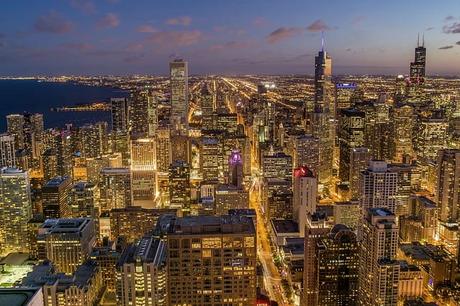Every year a large number of migratory birds get killed from collisions with some of the largest skyscrapers of the country, particularly in three cities, and the number is estimated to be as big as 600 million as per the research conducted by the Cornell Lab of Ornithology.
“Chicago, Houston, and Dallas are uniquely positioned in the heart of North America’s most trafficked aerial corridors. This, in combination with being some of the largest cities in the U.S., make them a serious threat to the passage of migrants, regardless of season,” said study lead author Kyle Horton.

The use of artificial night-light in tall buildings including extensively illuminated buildings, streetlights, safety lights, was cited by the researchers as a contributing factor to such a high rate of mortality and not to mention nearly one-half of the contiguous U.S. faces substantial light-pollution at night. It mainly happens during migratory seasons in spring and fall when birds in billion numbers fly across the nation while traveling between North and South America. The birds usually navigate with the help of natural light from the moon, sun, and stars.
In work published in Frontiers and the Environment, researchers combined satellite data of over two decades measuring migration of birds from across 143 stations and showing light pollution levels with weather radar. It also showed times and locations around the year when the maximum numbers of migrating birds are exposed to light pollution.
The avian light exposure in cities is as high as 24 times the countrywide average as indicated by the results and millions of birds colliding with buildings, power lines, communications towers, and wind turbines fatally. The most dangerous cities rankings change with the season as birds keep changing their migration routes between spring and fall.
Billions of birds fly between the Rocky and Appalachian Mountain ranges in the central U.S during spring, and the cities in the center of these areas are particularly deadly. Los Angeles considered as particularly a dangerous city during massive spring migration along the West Coast. In the meanwhile, fall migrations are most intense along the Atlantic seaboard facing heavy light pollution.
The highest number of birds can occur in just a few days out of the months’ long migrations during spring and fall. The dangerous cities can anticipate half of its bird-migration in a year to pass through in a week only depending on wind conditions, timing and temperature as noted in the study.
It’s not about birds only; the impacts on insects and bats can be similar as well.
These findings will help guide conservation efforts, mainly in urban centers, to lower lights at night. Once we start considering airspace as wildlife habitat in the world, the research presents a “fundamental need to understand” the interaction between organisms and human-made infrastructure.
“Now that we know where and when the largest numbers of migratory birds pass heavily lit areas we can use this to help spur extra conservation efforts in these cities,” said study co-author Cecilia Horton. “For example, Houston Audubon uses migration forecasts from the Lab’s BirdCast program to run ‘lights out’ warnings on nights when large migratory movements are expected over the city.”
Apart from these a quarter of a million birds die from knocking into residential buildings, and in that case, in both urban and rural settings, homeowners can play a part in protecting the avian species.
“If you don’t need lights on, turn them off,” Horton said. “It’s a large-scale issue, but acting even at the very local level to reduce lighting can make a difference. While we’re hopeful that major reductions in light pollution at the city level are on the horizon, we’re excited that even small-scale actions can make a big difference.”

